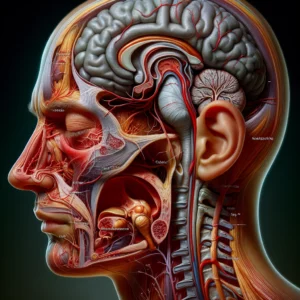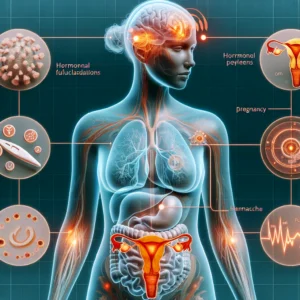Comprehensive Insight into Headache Types: Causes and Management Strategies
Headaches are a prevalent health issue that can severely disrupt your daily life, affecting your concentration, productivity, and enjoyment of recreational activities. These discomforts can manifest in various forms, each with distinct triggers and accompanying symptoms. Understanding the different types of headaches is essential for effective treatment and management. This knowledge empowers individuals to tailor their strategies based on personal experiences and specific needs, ultimately leading to a more effective response to this widespread health concern.
Whether you face occasional headaches or suffer from chronic issues, identifying the underlying causes is crucial for exploring appropriate therapies and implementing beneficial lifestyle modifications. As you navigate the complexities of headache management, consider various treatment options, including both traditional and alternative remedies. Techniques such as balanced acupuncture, neurological acupuncture, and manual therapy can provide significant relief by addressing the root causes of your discomfort, allowing you to regain control over your health and enhance your well-being.
By exploring these diverse treatment avenues, you can embark on a holistic journey focused on alleviating headaches while promoting your overall health and wellness.
Key Strategies for Effectively Managing Different Types of Headaches
- Tension headaches are the most commonly experienced type, often described as a constant band-like pressure around the head, which tends to worsen during stressful periods.
- Migraine headaches are characterized by severe, throbbing pain, usually accompanied by nausea, vomiting, and heightened sensitivity to light and sound, which can significantly disrupt your daily activities.
- Cluster headaches are infamous for their extreme pain, occurring in cyclical patterns, typically localized around one eye, making them among the most agonizing headache types.
- Sinus headaches stem from sinusitis, causing pressure and pain in the forehead, cheeks, and nasal areas, often exacerbated by allergies or infections.
- Hormonal headaches frequently affect women and are linked to hormonal fluctuations, which may occur during menstruation, pregnancy, or menopause, necessitating tailored management strategies.
 In-Depth Analysis of Tension Headaches: Identifying Triggers and Solutions
In-Depth Analysis of Tension Headaches: Identifying Triggers and Solutions
Identifying Triggers: Patterns Associated with Tension Headaches
Reflecting on your own experiences can help uncover specific patterns that trigger tension headaches. Factors such as extended hours of desk work, emotional stress, or improper ergonomic setups can significantly contribute to their onset. Recognizing these triggers is vital for preventing future occurrences and protecting your overall health. Common contributors include work-related stress, insufficient sleep, and even dehydration, all of which can amplify your discomfort. Keeping a detailed headache diary can aid you in tracking the timing and potential triggers of your headaches, empowering you to take proactive measures to mitigate their effects on your daily life.
Adopting a Multifaceted Approach for Tension Headache Relief
A well-rounded, multifaceted strategy is often the key to successfully alleviating tension headaches. Integrating therapies such as balanced acupuncture focuses on restoring energy flow throughout your body by targeting specific acupoints that may contribute to muscle tightness and stress. Moreover, incorporating relaxation techniques, including deep breathing exercises or yoga, can significantly relieve tension while enhancing your overall wellness. By addressing both physical and emotional stressors through a holistic approach, you can substantially reduce both the frequency and severity of tension headaches, leading to a marked improvement in your quality of life.
Maximizing Relief with Neurological Acupuncture and Manual Therapy Techniques
Neurological acupuncture can further enhance your relief efforts by concentrating on the nervous system’s role in pain perception. This specialized technique targets the pathways involved in headache development, potentially altering your brain’s responses to pain signals. When combined with manual therapy techniques, such as massage or myofascial release, you may experience significant relief from the tension that often exacerbates your headaches. Together, these therapies can create a synergistic effect, alleviating pain while fostering enduring relaxation and improved well-being.
 Thorough Examination of Migraines: Symptoms, Triggers, and Treatment Options
Thorough Examination of Migraines: Symptoms, Triggers, and Treatment Options
Migraines are more than just intense headaches; they are complex neurological events that can incapacitate you for hours or even days. They are characterized by severe, throbbing pain usually localized to one side of the head and may also be accompanied by symptoms such as nausea, vomiting, and heightened sensitivity to light and sound. Various triggers, including certain foods, hormonal changes, and environmental factors, can initiate these debilitating episodes, highlighting the necessity of recognizing and managing these influences for effective treatment.
Effective management of migraines typically requires a multi-layered approach. While medications can provide immediate relief during an attack, integrating therapies like acupuncture can significantly reduce the frequency and severity of future episodes. Neurological acupuncture specifically targets the pain pathways associated with migraines, potentially altering your brain’s response to pain stimuli and breaking the cycle of recurring attacks.
When paired with manual therapy techniques designed to alleviate muscle tension and enhance blood circulation, you may uncover a more holistic strategy for effectively managing migraine headaches, empowering you to reclaim your daily life from the grip of these distressing episodes.
Cluster Headaches: Understanding Patterns, Triggers, and Severity
| Metrics | Data |
|---|---|
| Prevalence | 1 in 1,000 adults |
| Age of onset | 20-40 years old |
| Duration of attacks | 15 minutes to 3 hours |
| Pain intensity | Severe, often described as the worst pain experienced |
| Frequency of attacks | 1 to 8 times a day |
Cluster headaches are recognized as some of the most excruciating types of headaches. They often manifest as a burning or piercing pain that occurs in cyclical patterns or clusters. You may experience these attacks multiple times daily over several weeks or months, followed by periods of complete relief. The pain typically localizes around one eye or one side of the head, and may be accompanied by additional symptoms such as nasal congestion or tearing, which exacerbates the distress of the experience.
Given their severity, cluster headaches necessitate prompt and effective management strategies. While conventional medications may provide some relief, exploring alternative therapies like acupuncture can significantly reduce the frequency and intensity of these painful episodes. By stimulating specific points associated with the trigeminal nerve—the primary nerve involved in headache pain—neurological acupuncture may help regulate your body’s pain response, potentially alleviating some of the burden related to cluster headaches.
When coupled with manual therapy techniques aimed at promoting relaxation and reducing stress levels, you may find a more balanced and practical approach to managing these intense headache episodes, ultimately improving your overall quality of life.
 Overcoming the Discomfort of Sinus Headaches: Causes and Treatments
Overcoming the Discomfort of Sinus Headaches: Causes and Treatments
Sinus headaches often occur when inflammation or infection in the sinus cavities leads to painful pressure in the forehead, cheeks, and around the eyes. You may also experience these headaches alongside nasal congestion, facial tenderness, and even fever. Understanding the underlying causes of sinus headaches is crucial for effective treatment, as they often arise from allergies or respiratory infections that can worsen your symptoms, leading to a cycle of discomfort.
A combined therapeutic approach can prove particularly beneficial in addressing sinus headaches effectively. Acupuncture has shown efficacy in reducing inflammation and promoting drainage within the sinuses, alleviating the pressure and discomfort associated with these headaches. Utilizing balanced acupuncture techniques specifically targets acupoints related to sinus health, while neurological acupuncture can address any related pain pathways contributing to your suffering.
Moreover, incorporating manual therapy can relieve tension in the neck and shoulders, which may further aggravate sinus pressure. This comprehensive, multifaceted strategy can yield significant relief from the discomfort linked to sinus headaches, allowing you to breathe easier and enjoy a more comfortable daily experience.
 Unveiling the Connection Between Hormones and Headache Management
Unveiling the Connection Between Hormones and Headache Management
Exploring Hormonal Influences on Headache Patterns
Understanding the intricate connection between hormones and headache occurrences enables you to take proactive measures in managing these particular headaches. Hormonal fluctuations, especially in women, can trigger intense headaches, often coinciding with menstrual cycles, pregnancy, or menopause. By identifying these patterns, you can better anticipate and prepare for potential headache episodes, allowing for more effective management.
Natural Remedies for Hormonal Headache Relief
To alleviate hormone-related headaches, consider integrating therapies designed to balance your body’s energy and hormonal levels. Acupuncture has been shown to help regulate hormonal fluctuations by targeting specific acupoints that influence endocrine functions. Additionally, neurological acupuncture can enhance this approach by addressing the nervous system’s role in pain perception during hormonal changes, providing a more comprehensive treatment experience that targets the underlying causes.
Holistic Strategies for Managing Hormone-Related Headaches
When combined with manual therapy techniques aimed at promoting relaxation and reducing stress, you may discover a more effective way to manage hormone-related headaches. This holistic approach can help you navigate the complexities of hormonal changes, equipping you with the tools needed to diminish pain and enhance your quality of life, allowing you to thrive even amidst these fluctuations.
 Strategies for Effectively Overcoming Rebound Headaches
Strategies for Effectively Overcoming Rebound Headaches
Rebound headaches often arise from the overuse of pain relief medications, resulting in a cycle of dependency and an increase in headache frequency. You may find yourself reaching for over-the-counter pain relievers more often than you would like, only to experience worsening headaches as the medication’s effectiveness diminishes. Recognizing this cyclical pattern is essential for breaking free from rebound headaches and regaining your well-being.
To effectively manage rebound headaches, it is crucial to reduce your reliance on medications while gradually exploring alternative therapies. Acupuncture provides a natural way to alleviate pain without resorting to pharmaceuticals. Utilizing balanced acupuncture techniques can help restore energy flow and promote relaxation, while neurological acupuncture addresses the pain pathways affected by medication overuse.
By incorporating manual therapy techniques focused on relieving tension and reducing stress, you may develop a holistic strategy for breaking the cycle of rebound headaches. This approach ultimately empowers you to regain control over your health and well-being, improving your overall quality of life.
 Effective Techniques for Understanding and Managing Mixed Headaches
Effective Techniques for Understanding and Managing Mixed Headaches
Mixed headaches present a unique challenge as they incorporate characteristics from multiple headache types, complicating both diagnosis and treatment. You may find yourself experiencing symptoms similar to tension headaches one day and migraines another, making it essential to tailor your management strategy based on your specific symptoms. Understanding the complexities associated with mixed headaches is vital for formulating a treatment plan that aligns with your individual needs.
Consider adopting a comprehensive approach that includes diverse therapies to effectively manage mixed headaches. Acupuncture can be particularly advantageous in addressing the array of symptoms associated with mixed headaches by targeting multiple acupoints relevant to different headache types. Additionally, neurological acupuncture may assist in modulating pain perception across various pathways, while balanced acupuncture promotes overall well-being and alleviates discomfort.
Moreover, manual therapy techniques can effectively relieve muscle tension and stress that may contribute to headache development. By integrating these varied approaches, you can create a personalized strategy for managing mixed headaches, significantly enhancing your overall quality of life.
Common Questions About Headaches and Their Management
What are the different types of headaches?
There are several distinct types of headaches, including tension, migraines, cluster, sinus, and hormone-related headaches. Each type exhibits unique characteristics and treatment options, necessitating customized approaches for effective management.
Can you elaborate on tension headaches?
The Article Types of Headaches Explained: A Comprehensive Guide appeared first on https://mcrtherapies.com
The Article Headache Types Explained: Your Comprehensive Guide Was Found On https://limitsofstrategy.com


I really appreciate how you’re breaking down the different types of headaches and what can trigger them. I’ve struggled with migraines for years, and it’s often the little things—like not drinking enough water or skipping meals—that turn into major headaches. I’ve also found that mindfulness techniques, like meditation and deep breathing, can help manage the pain when it strikes. It’s fascinating to see how both lifestyle and mental state play such significant roles. Has anyone else here explored more unconventional remedies or lifestyle changes that have made a difference for them? I’d love to hear some personal success stories!
I get where you’re coming from. It’s often the little things, right? I’ve heard from others that hydration can be a game changer, but it’s so easy to overlook. Your experience with mindfulness tools is interesting too; a lot of people don’t realize how much our mental state can impact physical symptoms.
I can totally relate to the struggle of managing headaches. I used to get tension headaches pretty regularly, especially after long days at work. Once I started paying attention to my hydration and taking short breaks to stretch, I noticed a significant difference. It’s interesting how something as simple as posture or even stress levels can play such a big role.